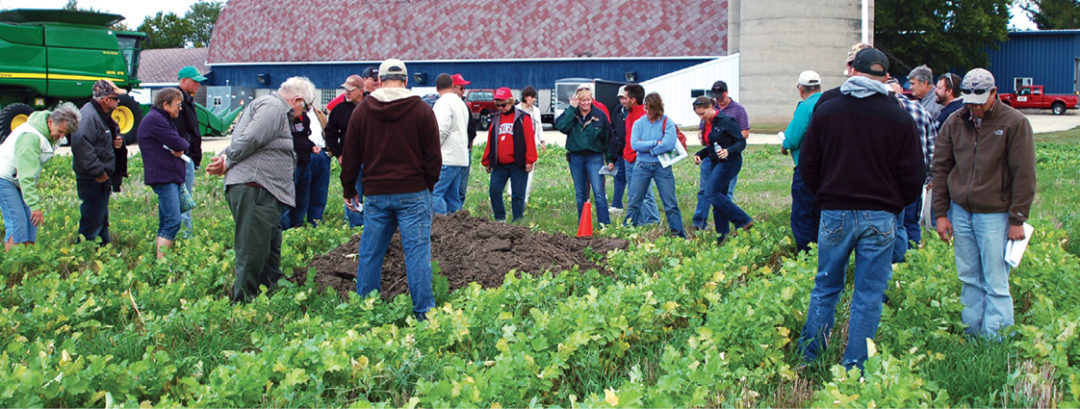No-Till Farmer
Get full access NOW to the most comprehensive, powerful and easy-to-use online resource for no-tillage practices. Just one good idea will pay for your subscription hundreds of times over.

Yield data collected from field trials shows the value oilseed radishes hold as a late-season cover crop after winter wheat or following corn-silage harvest.
Three no-tillers from Wisconsin who hosted a recent cover-crop field tour say radishes hold promise for breaking up soil compaction and capturing nitrogen for crops to be planted the following year.
Bill Rohloff, who no-tills corn, soybeans and winter wheat with his son, Ty, near Fort Atkinson, Wis., first seeded radishes in 2009 with limited success. The radishes were seeded in 7-inch rows, but dry weather inhibited germination and the stand was inconsistent.
“Even with a spotty stand, we saw a 7-bushel-per-acre yield increase on corn following the radishes,” Rohloff says.
To improve stand uniformity this year, Rohloff outfitted every other row of his 15-inch Kinze planter with 60-cell milo plates that can handle the radish’s small seed. He used the other units to seed Austrian field peas between the rows of tillage radishes.

“The Austrian field peas serve as a companion crop to the radishes, providing nitrogen to get the radishes growing quickly at less cost than a commercial nitrogen application,” Rohloff says. “We aimed for an application rate of 4 to 5 pounds of radish per acre for 30-inch rows, with 3 to 4 inches of space between plants.”
Rohloff says no-tillers drilling radishes in 7-inch rows should shoot for 8 to 10 pounds per acre.
“If you can get precise seed placement so they’re 3 or 4 inches apart, you can…